Welcome to Lisbon, the sunny Portuguese capital city that never disappoints. I’ve been to Lisbon so many times that I’ve lost count. I often get asked ‘Is Lisbon worth visiting?’ Absolutely! There are so many advantages to visiting Lisbon and there is so much to see. Lisbon is full of amazing churches, fantastic eateries and vibrant nightlife. But, it’s also relatively small for a European capital, which makes it manageable to do in 2-3 days as well, if you are pushed for time.
Disclosure: templeseeker.com is a participant in the Amazon Services LLC Associates Program and other affiliate advertising programs designed to provide a means for us to earn fees by linking to Amazon.co.uk, Get your Guide and other affiliated sites. Affiliate links may be used in this article on ‘Is Lisbon worth visiting’, but they do not impact on the price that you pay and they do help me to get this information to you for free.
Introduction to Lisbon and its History
Lisbon is the capital of Portugal located on the Western portion of the Iberian peninsular, on the River Tagus. It is one of the oldest cities in Western Europe, predating other European capitals such as Paris and Rome by centuries. Lisbon is known for its seven hills, which offer panoramic views of the surrounding landscape (yes, you need to be prepared to walk up and downhill a lot!)
Portugal itself emerged as a distinct and independent kingdom in 1143, and in 1179, it was recognised as a kingdom by the papal bull (issued by the pope) – Manifestis Probatum.
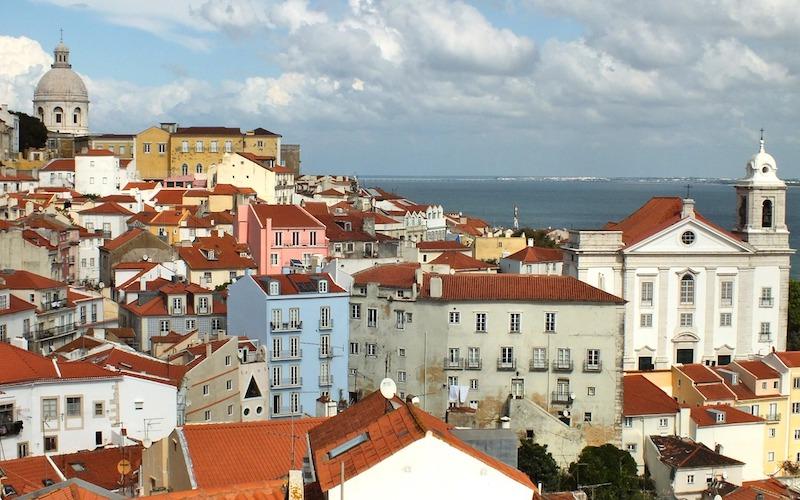
Lisbon has a rich history dating back to Roman times, and it played a significant role during the Age of Discovery in the 15th and 16th centuries. The city was a starting point for many exploratory voyages, including those of Vasco da Gama and Ferdinand Magellan.
There was a great earthquake in Lisbon, which occurred on the morning of November 1 in 1755. It is one of the most significant earthquakes recorded in European history. The earthquake had an estimated magnitude of 8.5–9.0 on the Richter scale and was followed by a tsunami and widespread fires, leading to massive destruction in Lisbon and affecting other parts of Portugal (as well as some parts of Spain and France).
Lisbon is now a vibrant and lively city which attracts tourists, immigrants and digital nomads from all over the world.

Is Lisbon Worth Visiting? Yes
Is Lisbon a city worth visiting? I would say absolutely yes! Lisbon is totally one of my favourite European cities (that’s why it’s pretty much my second home!). The city boasts phenomenal sight seeing including Sao Jorges castle, Jeronimos Monastery and the monument of Discoveries. Lisbon is famous for historical centre (Alfama), great food and it’s colourful buildings (many are painted brightly or have a facade of Azulejos – brightly coloured Portuguese tiles).
Lisbon is also famous for its trams – the Lisbon 28 that will take you on a tour of the whole city, and also the ferniculars such as Gloria which are trams that go uphill! (I love Gloria because it’s where you will find a lot of Lisbon Street Art).
Then, at nightime you can party on the bustling pink street, where you will meet people from all over the world enjoying the Portuguese food, drink and culture.
‘How many times have I been to Lisbon?’ I hear you ask! In all honesty….I’ve actually lost count! It must now be in excess of 10 times. I’ve taken about three or four flights into Lisbon every year since 2020! What does that tell you?
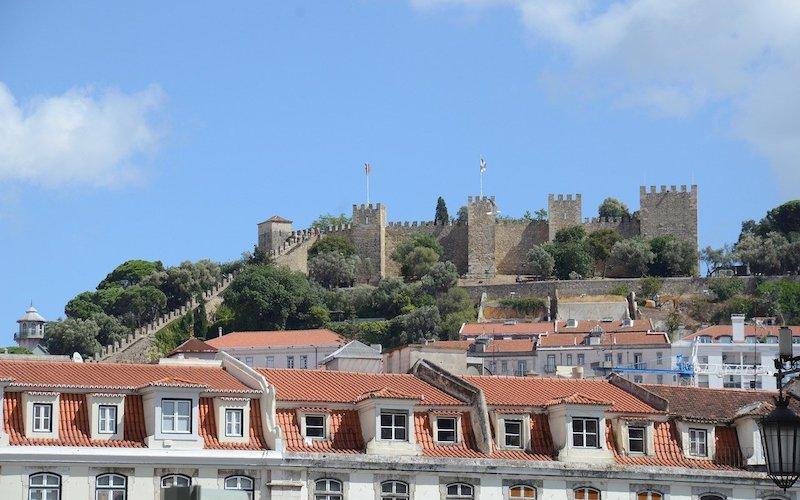
How many days should I spend in Lisbon?
Don’t miss this city! Spend at least 2-3 days there focusing on the historical centre and Belem. But, your best option would be to spend 5 days in Lisbon and combine it with a couple of trips out to places like Cascais, Sintra and Obidos. You can book day trips around the Lisbon area on Get Your Guide, but it is also quite easy to use the trains from Lisbon – I did an Obidos day trip by train myself with a friend.
The Pros of visiting Lisbon
There are oh, so many amazing things about Lisbon that I don’t know where to start! I have honestly had some amazing Lisbon experiences such as enjoying a shot of Ginja at 10.30am on a street art tour and snapping pics of the city from the Top of Castelo de Sao Jorge. Lisbon is accessible, with amazing buildings, monuments and nightlife. Food is good and cheap and English is widely spoken.
Enjoy!

Accessible from most UK and international Airports
Lisbon is really easy to get to from the UK and other European countries. I usually fly with Ryanair from Manchester to Lisbon. There are also direct flights to Lisbon from Birmingham, Bristol, Edinburgh, Liverpool, London-Gatwick, London-Heathrow and London-Luton. The flight time from the UK is very manageable – just two and a half hours.
If you are coming from America, you can fly non-stop to Lisbon from Boston, San Francisco and New York.
The Lisbon Metro will take you from the airport to central Lisbon and so there is no need to worry about getting to your hotel or getting ripped off by taxis. Just pay for your ticket at the machine (instructions also available in English) and jump on the Metro heading towards Baixa-Chiado or Restauradores for central Lisbon. Your hotel will probably let you know which is the nearest Metro stop to you.
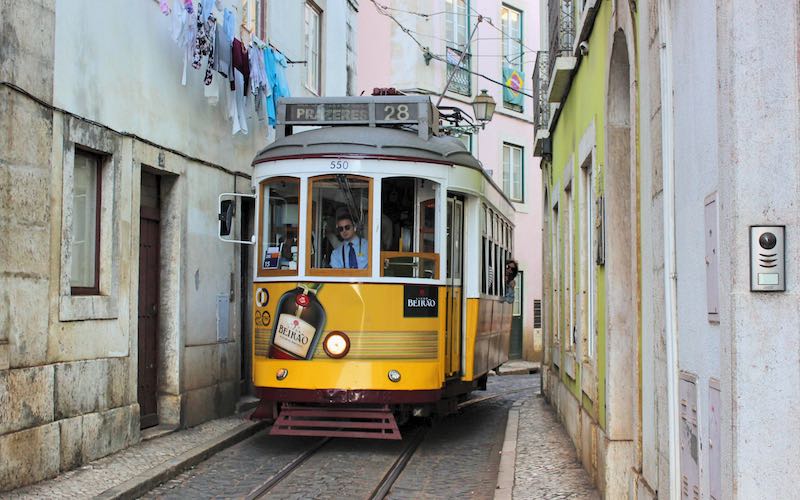
Transport Links to other Portuguese and Spanish Cities
For onward travel to the rest of Europe, you can get a train direct from Lisbon Oriente to Porto or Madrid. You can also fly from Lisbon direct to Paris, Barcelona, Brussels (Charleroi), Edinburgh, Marrakech and Milan (and this list is not exhaustive!)
Amazing Buildings and Monuments
The monuments and buildings in Lisbon are really truly stunning. Many of them can be seen on foot and are free to see or enter (many Churches are free). Due to the strong Christian presence in Lisbon, at one point the city was home to more Churches than Rome! Here is a list of what should not be missed…
- Castelo Sao Jorge
- Praça do Comércio
- Se Cathedral
- Carmo Convent
- Jeronimos Monastery (Belem)
- Monument to the Discoveries (Belem)
- Belem Tower
- National Pantheon
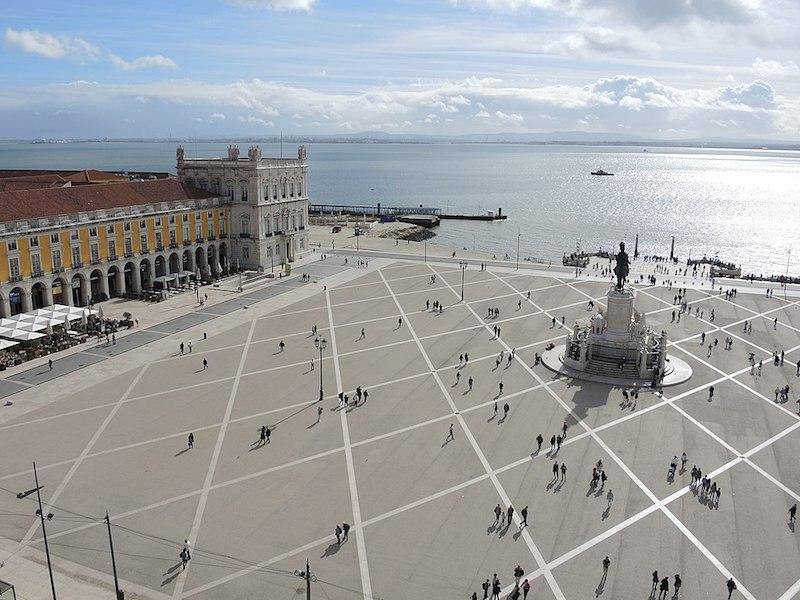
English is widely spoken
Don’t speak Portuguese? Don’t worry!
Most Portuguese people in Lisbon can and will speak English. In fact, quite often I will speak Portuguese to order in a restaurant and they will speak back to me in English! So it actually makes it hard or me to learn!!!
Although you don’t have to learn Portuguese to get by in Lisbon, it is nice to speak a few phrases and it will be appreciated.
- Ola – Hi or Hello
- Bom Dia – Good Day
- Obigada – thank you (Obrigado if you are a man)
If you are dedicated to learning some Portuguese for your travels, I would recommend installing Duolingo – a great App for learning new languages, which will gamify your learning.
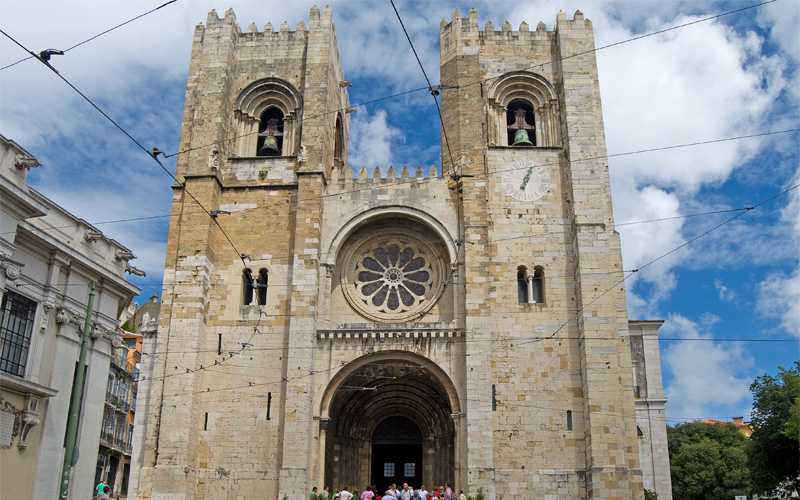
A Great Digital Nomad and Traveller Scene
As well as being popular tourists, Lisbon has a great digital nomad and long term traveller scene. There are many people who make Lisbon ‘home’ for 1-6 months while they work remotely. This results in lots of nomad career fairs, networking events, co-working spaces and meet-ups. It makes it easy to meet international friends in Lisbon. Check out the Facebook groups for meeting others in the area. If you are looking for some good nomad bars and places to work from on your laptop, I recommend Boa Vista (Cais do Sodré), Whisk and the Java Rooftop Bar.
Well Geared up for Tourists
Lisbon is an easy place to be a solo traveller. The Portuguese really know how to look after tourists and there are some fantastic tours to do in Lisbon. I really loved the Street Art tour and the day trip to Sintra (which included the stunning Pena Palace). There are also many walking tours in Lisbon that you can join to get to know the layout of the city and learn a bit about the history at the same time. Many walking tours are ‘free walking tours’ which means that you tip your guide at the end of the tour how much you can afford or what you think its worth.
Great value Food and Drink
Food and drink in Lisbon is out of this world, and surprisingly, for a European capital city, still good value. Also, servings for lunches and dinners are usually very large so you might like to ask for ‘comida para llevar’ and they often will let you take home what you could not finish!
For beers in Lisbon, you can go for a Superbock or a Sagres and you should expect to pay around €2-3. Nicer drinks (cocktails) can be pricey in upmarket bars (maybe €12-15).
One of my most amazing meals in Lisbon was a fish stew at O Pedrouços near the tower of Belem. It was so massive that it fed me lunch for three days!
If you are looking for international cuisine, you can get any kind of food that you want in Lisbon. As well as plenty of classic Portuguese dishes (lots of sardines and Baccalau!) I have also found good Thai food and curry.
Expect to pay around €10-20 for a main meal in Lisbon. A good tip is to ask for Prato do Dia, which is amazing value. You usually get a soup or salad, main meal, desert and glass of wine all for €10 or €12. In busy areas of Lisbon it may be €15-20 for the Prato do Dia (but still good value).
Surprisingly, I once found a Prato do Dia for just €5 in Aveiro! A gorgeous salad, bitoque (steak with an egg on it) and chocolate mousse desert plus bonus glass of Port. So if you travel outside of Lisbon, you can expect to have even better value food and drink.
Oh and one more thing – you must try the Pasteis da Nata Portuguese custard tarts. If you want the original and best, go to ‘Pastéis de Belém’ next to Jeronimos Monastery – this is the original secret recipe developed by the monks.
Good Beaches
So here is a really big plus for Lisbon – everything that you would usually want out of a city PLUS access to beaches! Jump on the train to Carcavelos or Cascais with your bikini and you will find beaches within walking distance of the train where you can sunbathe and swim. I love Carcavelos beach – there are plenty of little cafes overlooking the sea where you can grab a burger.
The cons of Lisbon
Despite all of these positives, no where is perfect, right? There are a few downsides to Lisbon. Sometimes it can be busy and noisy. The hills are a strain on the calf muscles and you don’t want to be walking on the Portuguese pavements in the slippy rain (well hello there, broken bones!) Despite the downsides, the answer to ‘Is Lisbon worth visiting?’ is still a resounding yes!
Big city – Can be Noisy!
Don’t stay in Bairo Alto! I made this mistake on one of my Lisbon trips, thinking it would be great to be right in the middle of where everything was happening…..it was not! You see it was fun at first, but when you realise that the parties go on until 6am in the morning, it is very difficult to get some sleep in these areas. Alfama is also another area that is nice to visit, but noisy and busy to stay in.
Cost – Accommodation can be Expensive
Although Lisbon is still relatively cheap for beer and food by European standards, accommodation can be expensive. The influx of foreigners who want to buy and rent in the city of Lisbon has pushed up the prices making it harder and more expensive to get long and short term rentals. Top tips for accommodation are to avoid the summer months and dates of festivals, when it is cheaper. You can opt for the shoulder season such as May or September, when it is cheaper and less busy than July and August.
The Hills and Calçada Pavements
You need to be relatively fit to enjoy Lisbon on foot – that’s because of so many steps and hills. If you are struggling, jump on a scooter or book a tuk-tuk tour to take the pressure off your feet!
The other thing that you need to be aware of in Lisbon is that locals don’t really go out at all in the rain. There is good reason for that. The Calçadas (beautiful cobbled patterned pavements of Lisbon) and the metro station steps become very slippy making it likely that you will fall – believe me, it’s not fun! I once went flying in Baixa metro station on a rainy day and the only thing that saved my knee from injury was falling on the load of clothes shopping that I had bought that day! Trust me, avoid the Calçadas and steps when its raining.
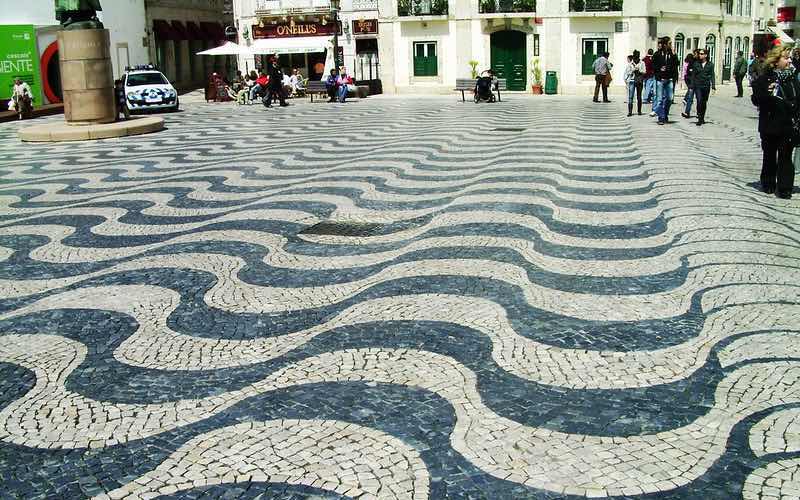
Lack of Heating in Winter
Lisbon is warm enough for 10 months out of the year, meaning that there is not really necessary to have heating in apartments. But what about the other two months of the year – December and January? In these coldest months, you will want to make sure that there is heating in your place, because it does get cold in Lisbon at night at this time of year. You may find it’s a simple form of heating (such as an oil filled radiator or air con unit that heats as well as cools), but it will be better than nothing! If you travel in the winter months, pack lots of layers (pyjamas are great!)
Most important Lisbon Travel Tips
- Spend 5-7 days in Lisbon if you can – then you can plan for a couple of day trips such as Cascais, Sintra or Obidos.
- Don’t miss the following – Castelo de Sao Jorges, Carmo Convent, Time Out food market, Belem (Jeronimos Monastery, Belem Tower and Monument to Discoveries), Se Cathedral and Praça do Comércio.
- Have a selection of credit cards (VISA works well) and cash money (for tips for tour guides and shops that don’t take card).
- Download Duolingo (for Portuguese), cp.pt app (for train travel), Uber (for taxis in Lisbon) and Glovo (food ordering app!)
- By a Metro ticket that you can top up (Viva travel card) and you can use this to go on the trams as well (including the Gloria Fernicular).
- Many bars do a tab in Lisbon, so be aware of that and don’t forget to pay before you leave!
What to pack for Lisbon
- Good walking boots and a pair of trainers – this is a very hilly city, so your feet need to be comfy. Toss the heels for sure!
- Jeans, shorts and T-shirts – casual clothes work best for day tours.
- A nice dress or skirt and top for evening wear – Lisbon has great nightlife.
- Sunglasses or glasses with light reactive lenses.
- Sun hat and sun cream – especially if you are then in the summer months.
- Bikini or swimwear – for Carcavelos or Cascais beach.
- A refillable water bottle – I like to use my SIGG bottle.
- Padlock – for locking your things away if you are using hostels.
- A pashmina or scarf – great for covering shoulders in Churches and also keeping the sun off you, as well as keeping you warmer on chilly evenings.
- Portugal Lonely Planet – It’s nice to have something to read on public transport and in times when you don’t have internet access. The Lonely planet also has some great restaurant and hotel recommendations.
Where to stay in Lisbon
Lisbon has some great options for where to stay. It’s a fantastic hostel city, with a range of relaxing hostels for digital nomads and party hostels for those up for a good time. Some good ones are:
- Good Morning Lisbon Hostel – Great Breakfast included!
- Yes! Lisbon Hostel – A great party hostel
- Lisbon Lounge Hostel – Great location in the centre of the historic quarter
If you are looking for a good mid-range option then the Lisbon IBIS is a great place to stay. I also love Hotel Avenida Palace (near Restauradores).
Further Reading on Lisbon
I hope that you enjoyed my blog on ‘Is Lisbon worth visiting?’ If you would like to read more about Lisbon, check out these other articles on Templeseeker…
